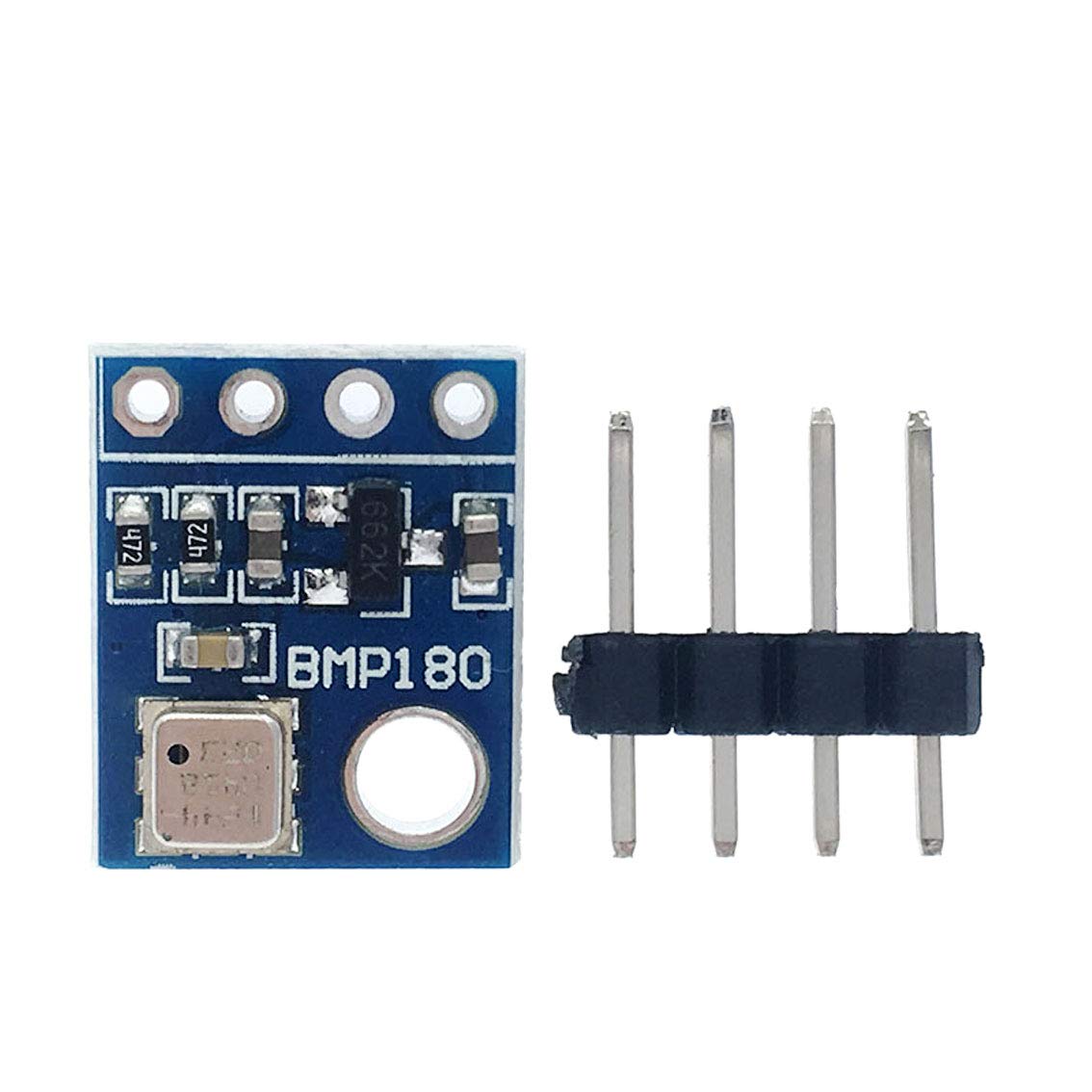BMP180 Barometric Pressure Sensor Module
All Prices Incuding GST
Order Through WhatsApp
+91-8249931161
Fast Delivery
Same Day Dispatch.
Bulk Purchase
- 1.8V to 3.6V Supply Voltage
- Low power consumption – 0.5uA at 1Hz
- I2C interface
- Max I2C Speed: 3.5Mhz
- Very low noise – up to 0.02hPa (17cm)
- Fully calibrated
- Pressure Range: 300hPa to 1100hPa (+9000m to -500m)
BMP180 Digital Barometric Sensor Module compatible with Arduino will Measure the absolute pressure of the environment using a digital barometer such as this has some interesting applications.
By converting the pressure measured into altitude, you have a reliable sensor for determining the height of your robot, plane or projectile! Using a sensor as capable as the BMP180 you can achieve an accuracy of 1m, with the noise of only 17cm in ultra-high resolution noise.
The device will operate at the only 0.3uA meaning low current draw for battery-powered applications. The BMP180 comes fully calibrated and ready to use. As the device operates over I2C we’ve added optional I2C pull-ups that can be enabled using the PU (pull up) jumper on the board for your convenience and ease during breadboarding.
Using I2C, the device provides pressure and temperature as 16bit values, which are used along with calibration data within the device are used to provide a temperature compensated altitude calculation.
- Shipping Time:- Our orders are shipped within 24 Hours.
- Delivery Time:- 2-5 Days (Anywhere in India), 7-10 Days for remote location
- Shipping Partner:- Bluedart, Amazon Shipping, Ekart Logistics, Delhivery & India Post.
- Replacement:- Damaged During Transit, Missing Parts Or Item Mismatch.
- Return:- Item mismatch or parts missing etc.
- No return/Replacement will apply if the Product has been subject to misuse, static discharge, neglect, accident, modification, or has been soldered or altered in any way.
- We accept no responsibility for improper installation of our products. Electrical polarity must be properly observed in hooking up electrical components.







